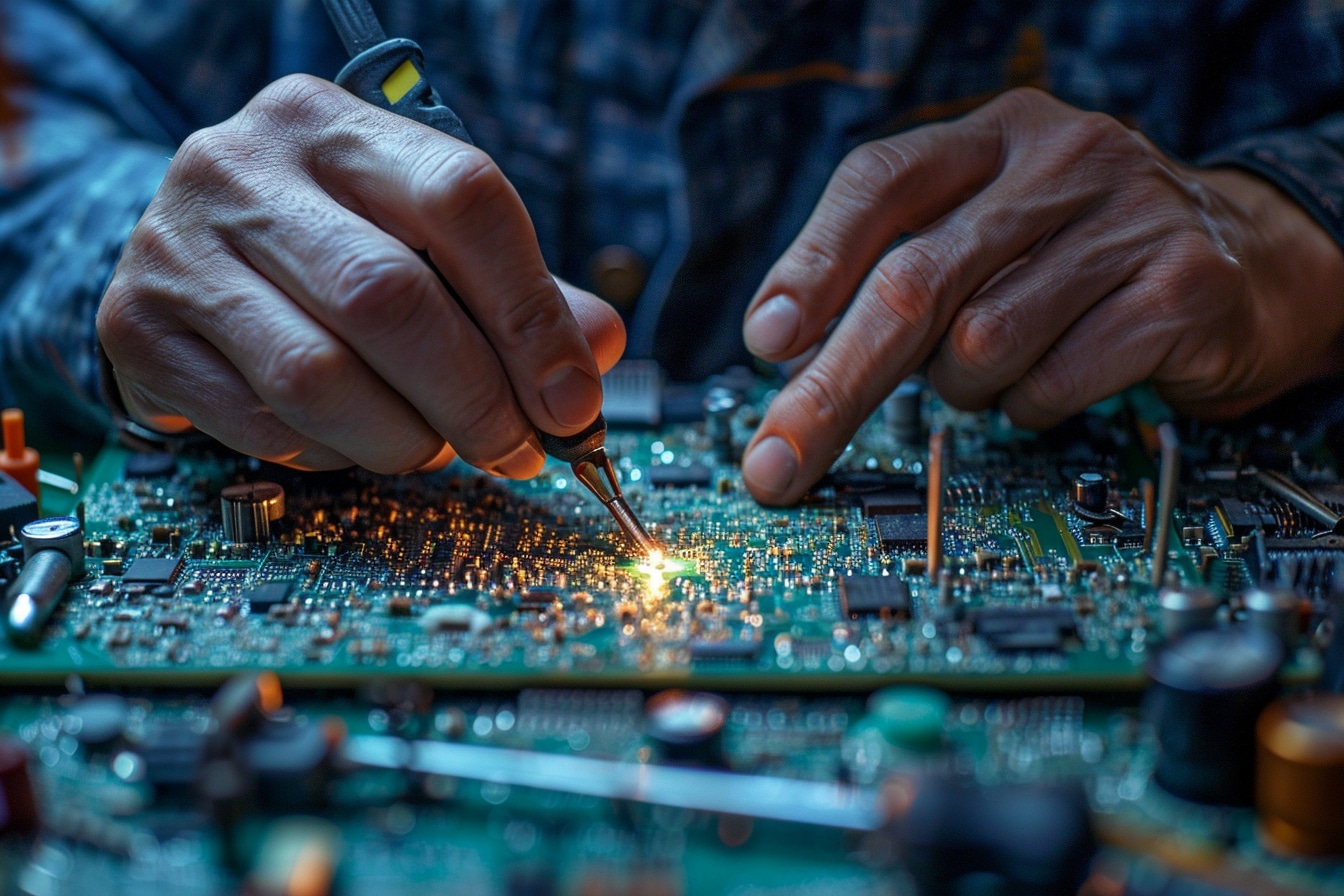Reviving Your Tech: A Comprehensive Guide to Efficient Gadget Repair

In an era dominated by technology, electronic gadgets have become integrated into every aspect of our daily lives. Whether for work, education or entertainment, their roles are undeniable. However, their lifespan can be shortened by malfunctions or accidents. Rather than rushing to buy a new one, undertaking the repair of damaged devices can prove to be an economical and ecological approach.
Repair as an ecological challenge
Before starting the technical procedures, it is essential to emphasize the ecological impact of the repair. Faced with the growing quantity of electronic waste, taking the initiative to repair your devices contributes positively to preserving the environment. Such action helps reduce the carbon footprint linked to the production of new devices and the volume of electronic waste.
Choice of self-repair or recourse to a professional
The range of possibilities extends from independent repair, a rewarding and educational adventure, to the choice of leaving the expertise to a professional. If personal repairs can be attractive for the most skilled, the risks of additional damage should not be neglected. For devices still under warranty or requiring complex interventions, favoring the services of a certified repairer is wise.
The importance of the right tools
An excellent handyman is nothing without his tools. Electronic repair requires a range of specific tools, such as precision screwdrivers, pliers, multimeters, and soldering equipment. Investing in a quality repair kit is a significant prerequisite to avoid compromising the delicate components of technological gadgets.
Diagnose the problem correctly

Identify the source of the malfunction
The first crucial step is the precise identification of the problem. Visually examining the device for possible breaks, burns on circuits or unsoldered components is recommended. Careful diagnosis may require the use of measuring instruments to test circuit continuity or component voltage.
Use online resources
The web is full of information to understand common problems associated with various types of devices. Forums, tutorial videos, and technical documentation are excellent resources for gathering relevant information and practical advice. These platforms often offer step-by-step solutions that one can follow to complete the diagnosis and repair.
Practical steps of repair
Preparing the workstation
A suitable working environment is essential to successfully complete a repair. A flat, clean, organized surface will help arrange tools efficiently and keep small parts safe. Using anti-static mats and grounding straps to protect electronic circuits from electrostatic discharge can mean the difference between the success and failure of a repair.
Meticulous disassembly
Precise and controlled movements are necessary to disassemble any electronic device. Using boxes or containers to separate and classify screws and disassembled components is a wise method. Photos or diagrams taken throughout the process can play a key role during reassembly.
Repair and replacement of components
With the defective elements identified, it is time to proceed with the repair. Whether by soldering new components or replacing worn parts, skill and precision are essential. Purchasing genuine or compatible spare parts from reliable suppliers is a wise decision to maintain the performance and longevity of the equipment.
Tests before reassembly
Before closing the device, it is crucial to carry out tests to ensure that the problem has been resolved. This may include powering individual circuits, testing the operation of the device, or using diagnostic software, as appropriate. Skipping this step could result in additional effort if the problem is not fully resolved.
Good practices and precautions

Safety first
Safety should never be neglected. Wearing protective glasses, learning about the precautions related to handling batteries or other dangerous components, and working in a well-ventilated space are basic but essential measures.
Respect the standards
Following the manufacturer’s instructions and adhering to industry standards help ensure not only a successful repair but also the durability of the device. Ignoring these details can lead to irreversible damage or reduced performance.
Software update
In some cases, particularly for smartphones or computers, hardware problems are linked to software failures. An often overlooked aspect of repair is updating or reinstalling operating systems and firmware. Ensuring that the device is equipped with the latest software can sometimes resolve unexpected issues.
Electronics Repair Outlook
Evolution of accessibility of repairs
With the adoption of legislation promoting the right to repair, the trend is towards better accessibility to repair manuals and spare parts. This promising development could transform the culture of electronic consumption and include it towards more sustainability.
Community involvement
The exchange of knowledge and mutual assistance within communities of technology and repair enthusiasts play a considerable role in the democratization of electronic device repair. In addition, the emergence of fablabs and repair cafés offers spaces where everyone can learn to repair and share their skills.
This enriching social fabric strengthens collective knowledge and can even nourish a new wave of professionals specializing in electronic repair.
Innovation in tooling and repair techniques
Technological progress is not to be outdone and brings new developments in the tools and methods used to repair gadgets. The miniaturization of devices and the integration of more complex technologies require constant evolution of repair techniques. Whether it’s using 3D printers to create custom parts or mastering new welding methods, the field is constantly changing.
Role of manufacturers and public policies
The ease of repair of electronic devices depends largely on product design and manufacturers’ policies regarding the openness of their systems. Policy incentives and regulations can positively influence this landscape, encouraging companies to think about repairability by design.
The refurbishment of electronic gadgets is a process that encompasses environmental, economic and societal aspects. Although the path to a thriving repair culture is fraught with challenges, personal and collective involvement in electronic device repair is a vehicle for meaningful change.
Comments
Leave a comment